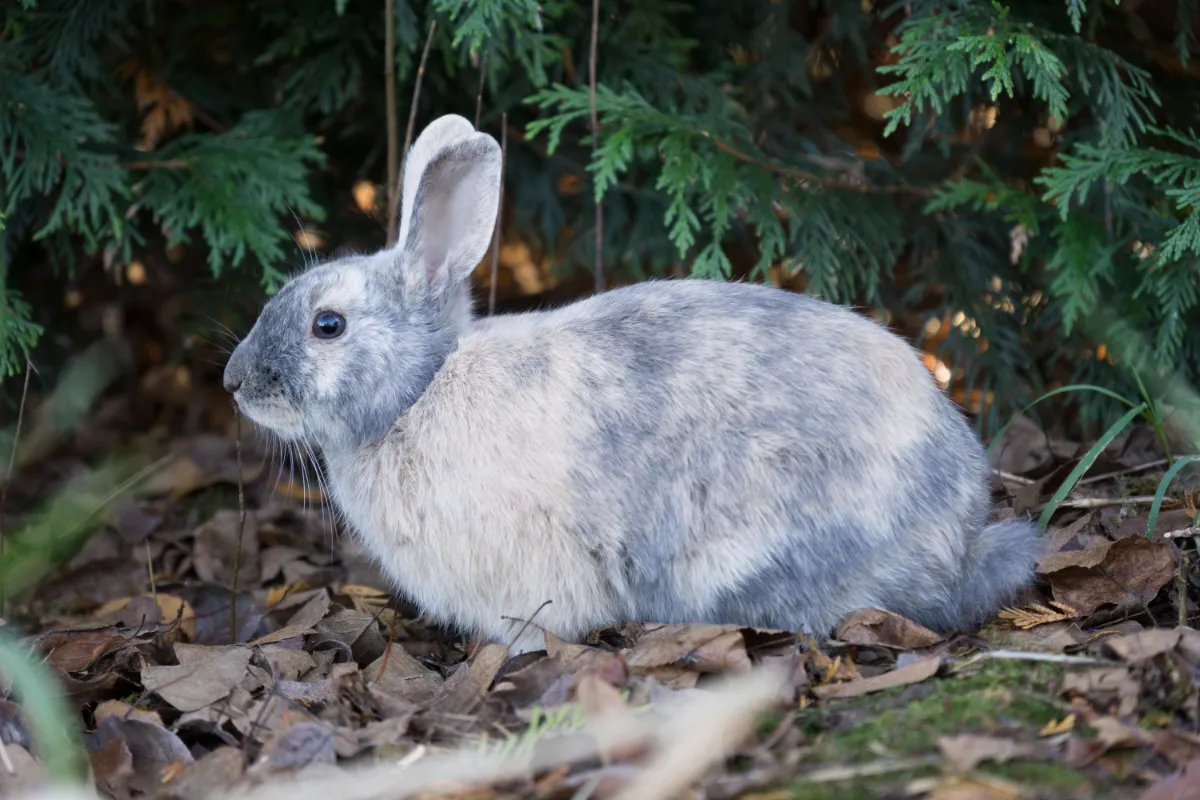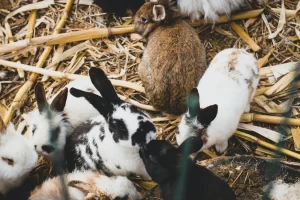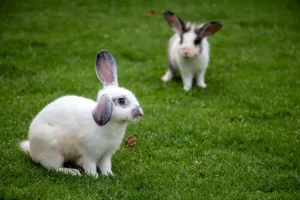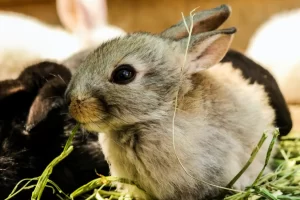Are you worried that your furry friend might be feeling the heat a little too much? Well, fear not! In this article, we’ll equip you with the knowledge you need to tell if your rabbit is too hot.
From physical indicators to behavioral changes, we’ll cover it all. We’ll also share tips on creating a cool environment and keeping your rabbit hydrated.
So sit back, relax, and get ready to become a rabbit-cooling expert!
In This Article
- 1 Key Takeaways
- 2 Signs of Overheating in Rabbits
- 3 Physical Indicators of a Hot Rabbit
- 4 Behavioral Changes in Overheated Rabbits
- 5 Creating a Cool Environment for Your Rabbit
- 6 Tips for Keeping Your Rabbit Hydrated in Hot Weather
- 7 Seeking Veterinary Care for a Hot Rabbit
- 8 Frequently Asked Questions
- 8.1 How Often Should I Check My Rabbit for Signs of Overheating?
- 8.2 Can I Use a Fan to Cool Down My Rabbit’s Living Area?
- 8.3 What Are Some Common Mistakes to Avoid When Trying to Cool Down a Rabbit?
- 8.4 Are There Any Specific Foods I Should Avoid Feeding My Rabbit During Hot Weather?
- 8.5 How Long Does It Typically Take for a Rabbit to Show Signs of Overheating?
- 9 Conclusion
Key Takeaways
- Signs of overheating in rabbits include excessive panting, drooling, lethargy, redness or inflammation of the ears, and loss of appetite.
- Physical indicators of a hot rabbit include heavy panting, red ears, lethargy, loss of appetite, and seeking shade or lying on cool surfaces.
- Behavioral changes in overheated rabbits can include increased restlessness, decreased appetite, agitation, seeking shade, and lying sprawled out to cool down.
- To keep your rabbit cool, provide a fan or air conditioning, ensure the enclosure is located in a shady area, offer fresh, cool water at all times, use a water bottle with a frozen water bottle attached, and freeze treats for a refreshing snack.
Signs of Overheating in Rabbits
You should check for signs of overheating in your rabbit, such as excessive panting and drooling.
Preventing heatstroke in rabbits is crucial during the summer months. Rabbits are highly sensitive to heat and can easily suffer from heatstroke, which can be life-threatening. When a rabbit overheats, its body temperature rises rapidly, leading to serious health issues.
To ensure the well-being of your furry friend, it’s important to be vigilant and proactive in identifying signs of overheating. Watch out for excessive panting, drooling, lethargy, redness or inflammation of the ears, and loss of appetite.
If you notice any of these signs, take immediate action to cool down your rabbit by providing shade, fresh water, and a cool environment. Remember, proper summer safety tips for rabbits are essential to keep them healthy and happy.
Physical Indicators of a Hot Rabbit
If your rabbit is panting heavily and has red ears, it is likely indicating that it is too hot. Rabbits are more comfortable in cooler temperatures, preferably between 60-70 degrees Fahrenheit. When they become overheated, they may exhibit signs of distress such as panting, red ears, lethargy, and loss of appetite. It is important to take immediate action to cool down your rabbit to avoid heatstroke. Here are some effective cooling methods for rabbits:
| Cooling Method | Details |
|---|---|
| Frozen water bottle | Wrap a frozen water bottle in a towel and place it in your rabbit’s enclosure for them to lean against and cool down. |
| Ceramic tiles | Place ceramic tiles in the enclosure for your rabbit to lie on. They will help to dissipate heat and keep your rabbit cool. |
| Cooling mats | Cooling mats designed for pets can be used to provide a cool surface for your rabbit to rest on. These mats are typically filled with a gel that stays cool for extended periods. |
| Frozen treats | Offer your rabbit frozen fruits or vegetables as a tasty and refreshing treat. This will help to cool them down from the inside. |
Behavioral Changes in Overheated Rabbits
Some common behavioral changes in overheated rabbits include increased restlessness and decreased appetite. It’s important to be aware of these signs as they can indicate that your rabbit is experiencing heatstroke symptoms. When a rabbit’s body temperature rises above normal, it can lead to serious health problems.
If you notice your rabbit becoming more agitated or restless than usual, it may be a sign that they’re feeling uncomfortable due to the heat. Additionally, a decrease in appetite can indicate that your rabbit isn’t feeling well.
To help cool down your rabbit, there are several effective cooling methods you can try. These include placing a cool towel on their back, providing them with frozen water bottles to lay against, and ensuring they’ve access to a shaded and well-ventilated area.
Creating a Cool Environment for Your Rabbit
To create a cool environment for your rabbit, try providing them with a fan or air conditioning, as these can help regulate their body temperature. Rabbits are sensitive to heat and can easily suffer from heatstroke, which can be life-threatening.
Here are three ways to keep your rabbits cool in the summer and prevent heatstroke:
- Provide shade: Make sure your rabbit’s enclosure is located in a shady area or provide them with a shelter that offers protection from direct sunlight.
- Offer fresh water: Rabbits need access to fresh, cool water at all times. Consider using a water bottle with a frozen water bottle attached to keep the water cool for longer periods.
- Freeze treats: Another way to keep your rabbit cool is by freezing their favorite treats. This not only provides a refreshing snack but also helps lower their body temperature.
Tips for Keeping Your Rabbit Hydrated in Hot Weather
Make sure you regularly check and refill your rabbit’s water bowl, as well as offer them fresh vegetables with high water content, like cucumber or lettuce, to keep them hydrated in hot weather.
Rabbits are susceptible to heatstroke and dehydration, so it’s essential to provide them with ample shade during hot days. Shade helps to regulate their body temperature and prevents them from overheating. You can create shade by placing a cover or umbrella over their enclosure or moving them to a cooler area of your home.
Additionally, rabbits need access to clean, fresh water at all times. While both water bottles and water bowls can be used, water bottles are generally preferred as they prevent spills and keep the water clean. However, some rabbits may prefer drinking from a bowl, so it’s important to observe their preferences and ensure they’re drinking enough water to stay hydrated.
Seeking Veterinary Care for a Hot Rabbit
If your rabbit appears overheated and is showing signs of distress, you should contact a veterinarian immediately. Heat stress can be dangerous for rabbits and can lead to serious health complications if not addressed promptly.
Here are three important steps to managing heat stress in rabbits:
- Provide immediate cooling: Move your rabbit to a cooler area and place a fan nearby to increase air circulation. You can also gently mist your rabbit with cool water or place a damp towel over their body to help bring down their body temperature.
- Offer water and hydration: Ensure that your rabbit has access to fresh, cool water at all times. You can also provide wet vegetables and fruits to help keep them hydrated.
- Seek emergency care: If your rabbit’s condition doesn’t improve or if they show severe signs of distress such as difficulty breathing, lethargy, or unconsciousness, it’s crucial to seek immediate veterinary care. Heat stress can be life-threatening, and a veterinarian will be able to provide the necessary treatment to stabilize your rabbit’s condition.
Frequently Asked Questions
How Often Should I Check My Rabbit for Signs of Overheating?
To ensure your rabbit stays safe from overheating, it’s important to regularly check for signs of discomfort. Keep an eye out for excessive panting, lethargy, red ears, and moist fur. Check your rabbit frequently to catch any signs early.
Can I Use a Fan to Cool Down My Rabbit’s Living Area?
Using a fan to cool your rabbit’s living area can be effective, but it’s important to monitor its effectiveness. Consider alternative cooling methods like frozen water bottles, ceramic tiles, or air conditioning.
What Are Some Common Mistakes to Avoid When Trying to Cool Down a Rabbit?
To create a rabbit-friendly cooling area, avoid common mistakes like leaving a rabbit in direct sunlight or using ice packs directly on their body. Provide shade, proper ventilation, and cool surfaces for them to rest on.
Are There Any Specific Foods I Should Avoid Feeding My Rabbit During Hot Weather?
During hot weather, it’s important to know which foods to avoid feeding your rabbit. Certain foods can increase their risk of overheating. But how can you tell if your rabbit is too hot?
How Long Does It Typically Take for a Rabbit to Show Signs of Overheating?
You’ll notice signs of overheating in rabbits after they’ve been exposed to high temperatures for too long. To prevent this, make sure they have access to shade, plenty of water, and a cool, well-ventilated environment.
Conclusion
To ensure the well-being of your rabbit, it’s crucial to recognize the signs of overheating. Look for physical indicators such as panting, red ears, or a warm body. Keep an eye out for behavioral changes like decreased activity or seeking cool surfaces.
Create a cool environment by providing shade, proper ventilation, and frozen water bottles. Remember to keep your furry friend hydrated with fresh water and juicy snacks.
If you suspect your rabbit is too hot, seek immediate veterinary care. Stay informed and keep your bunny comfortable in hot weather.





